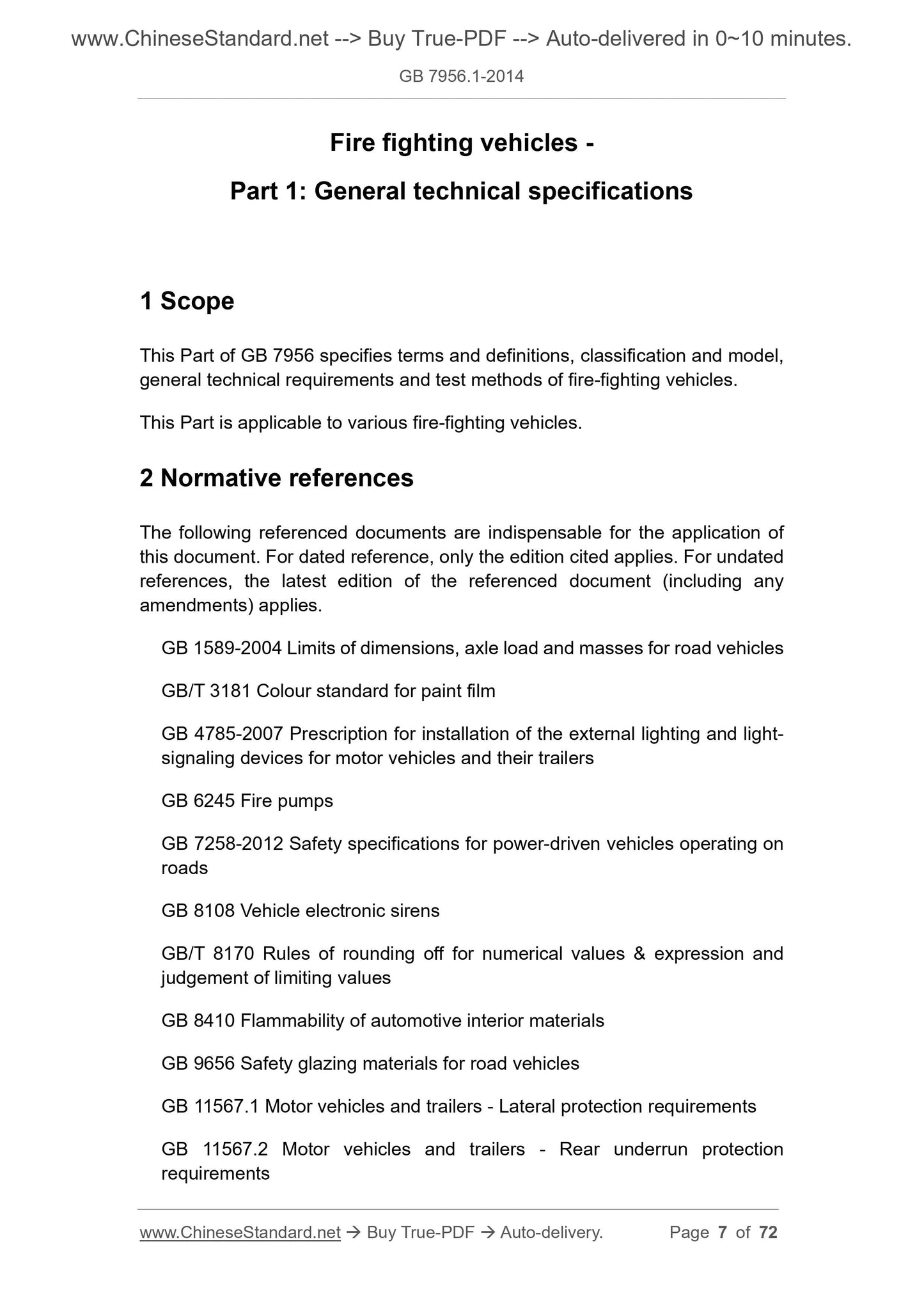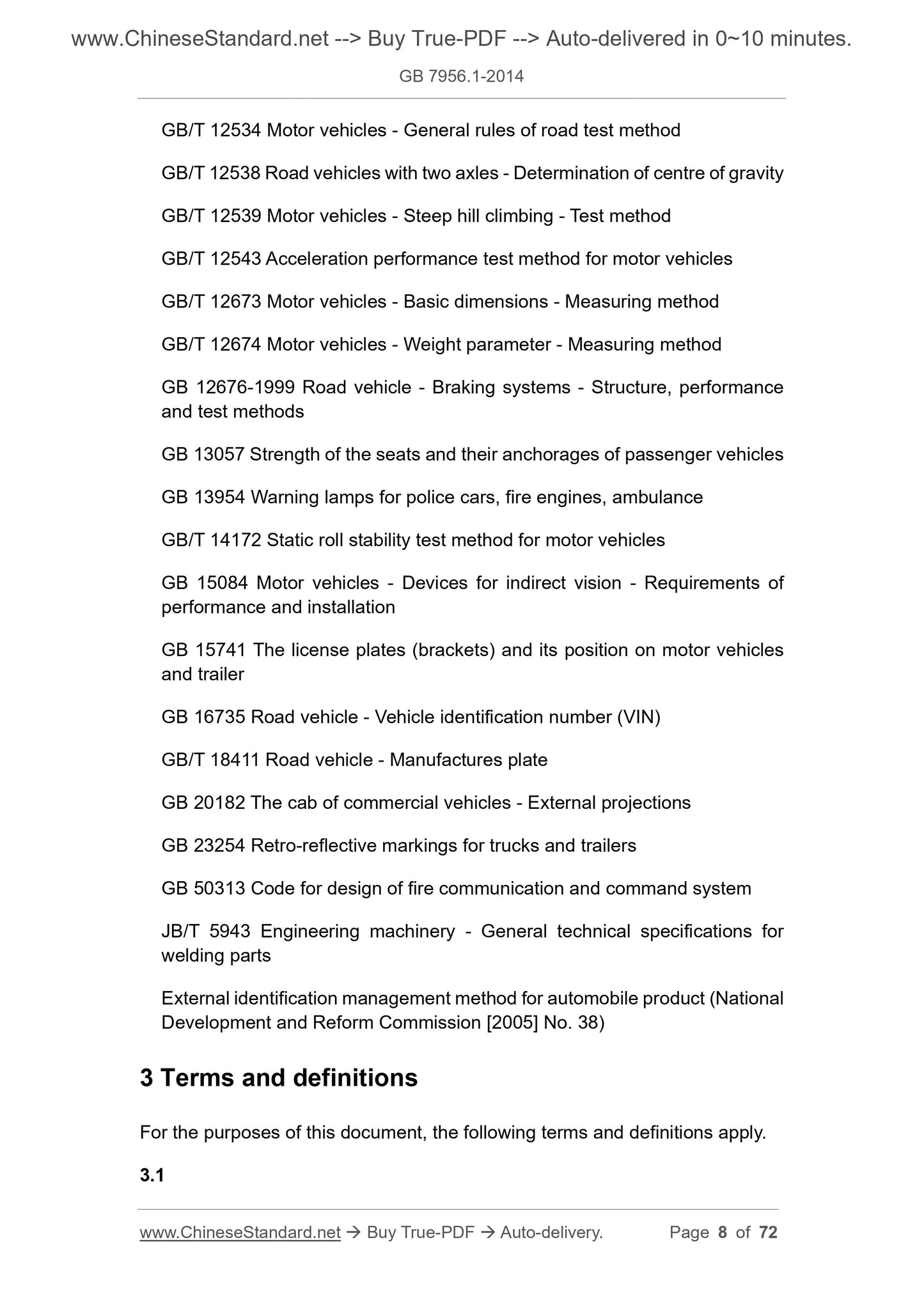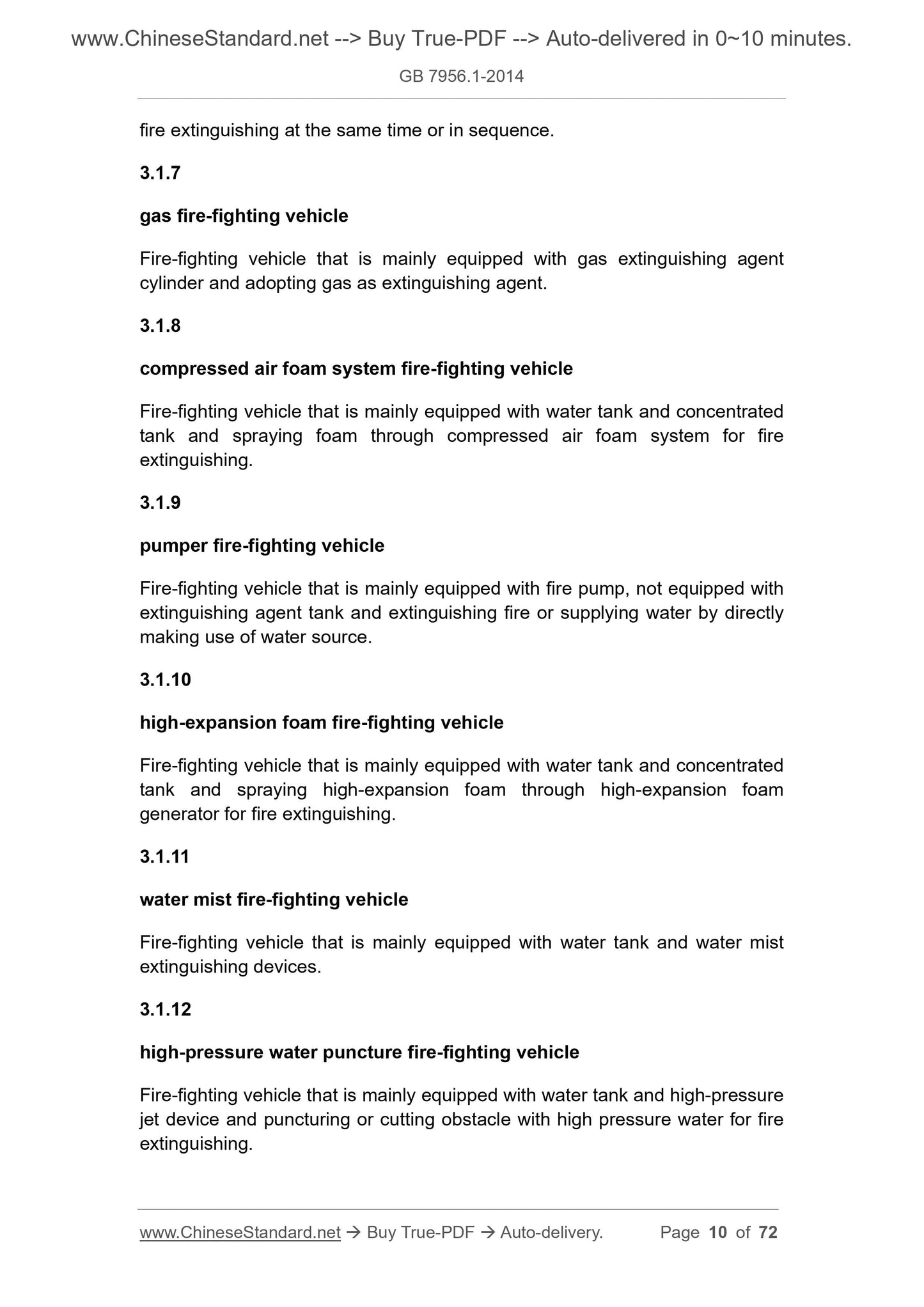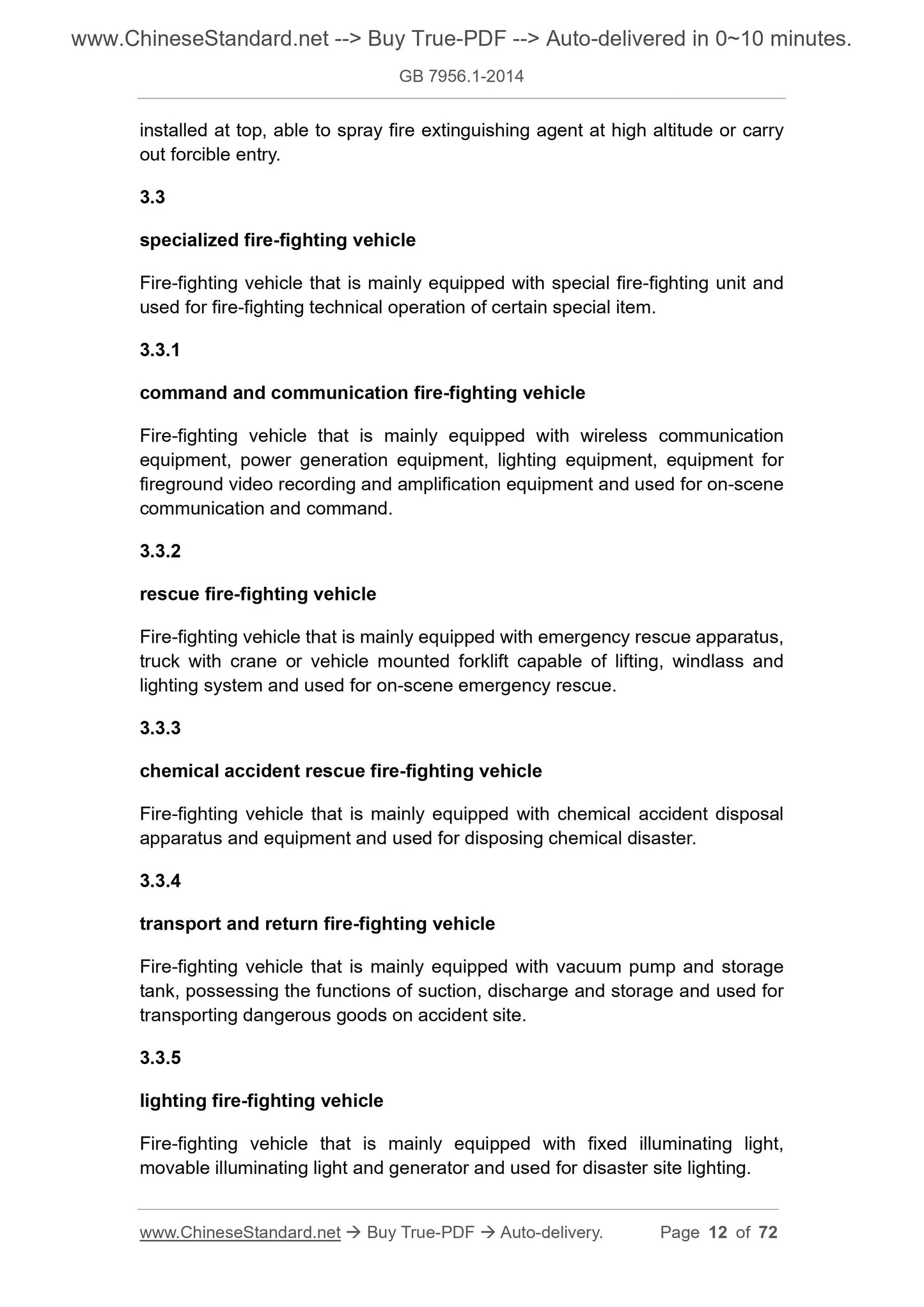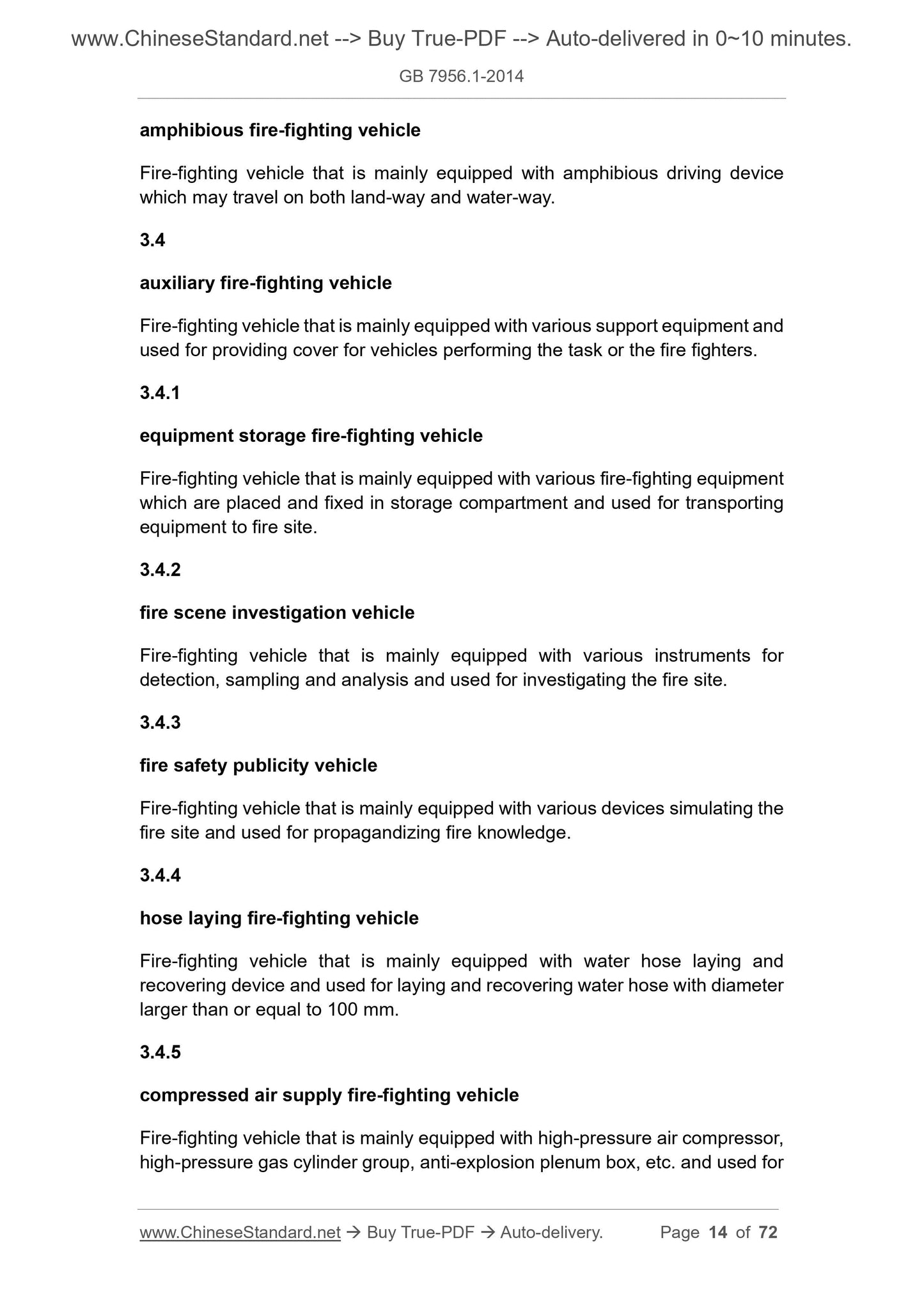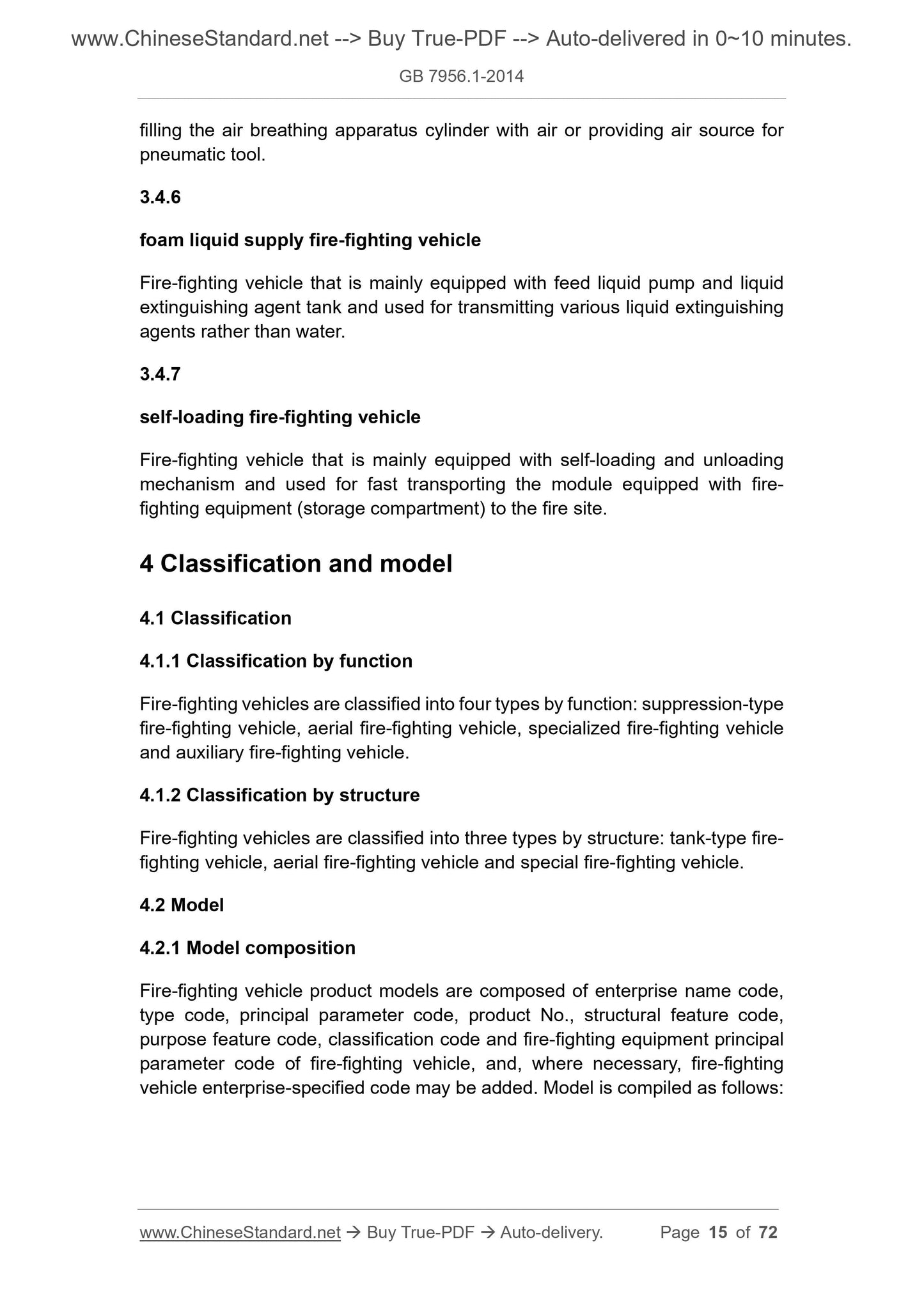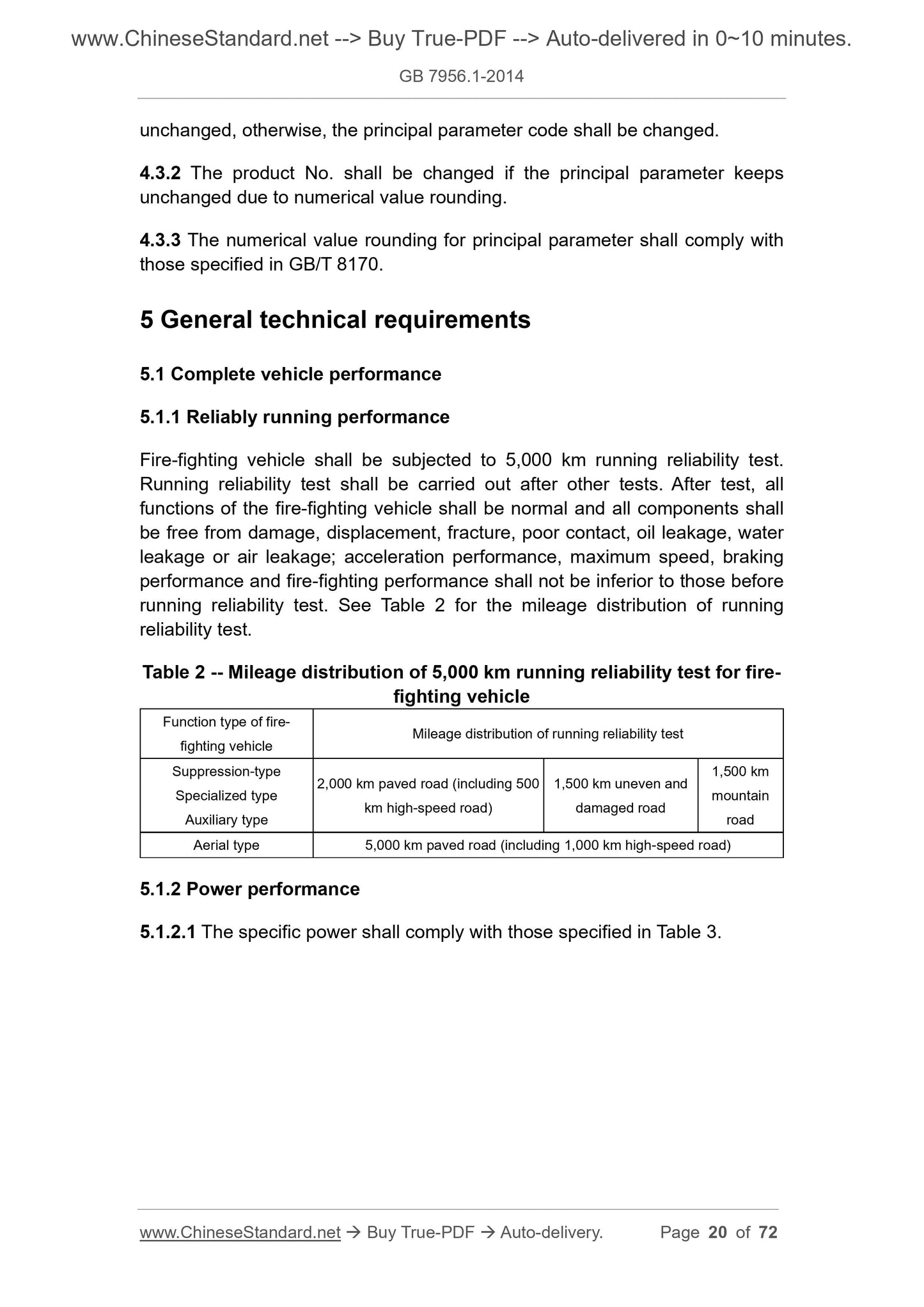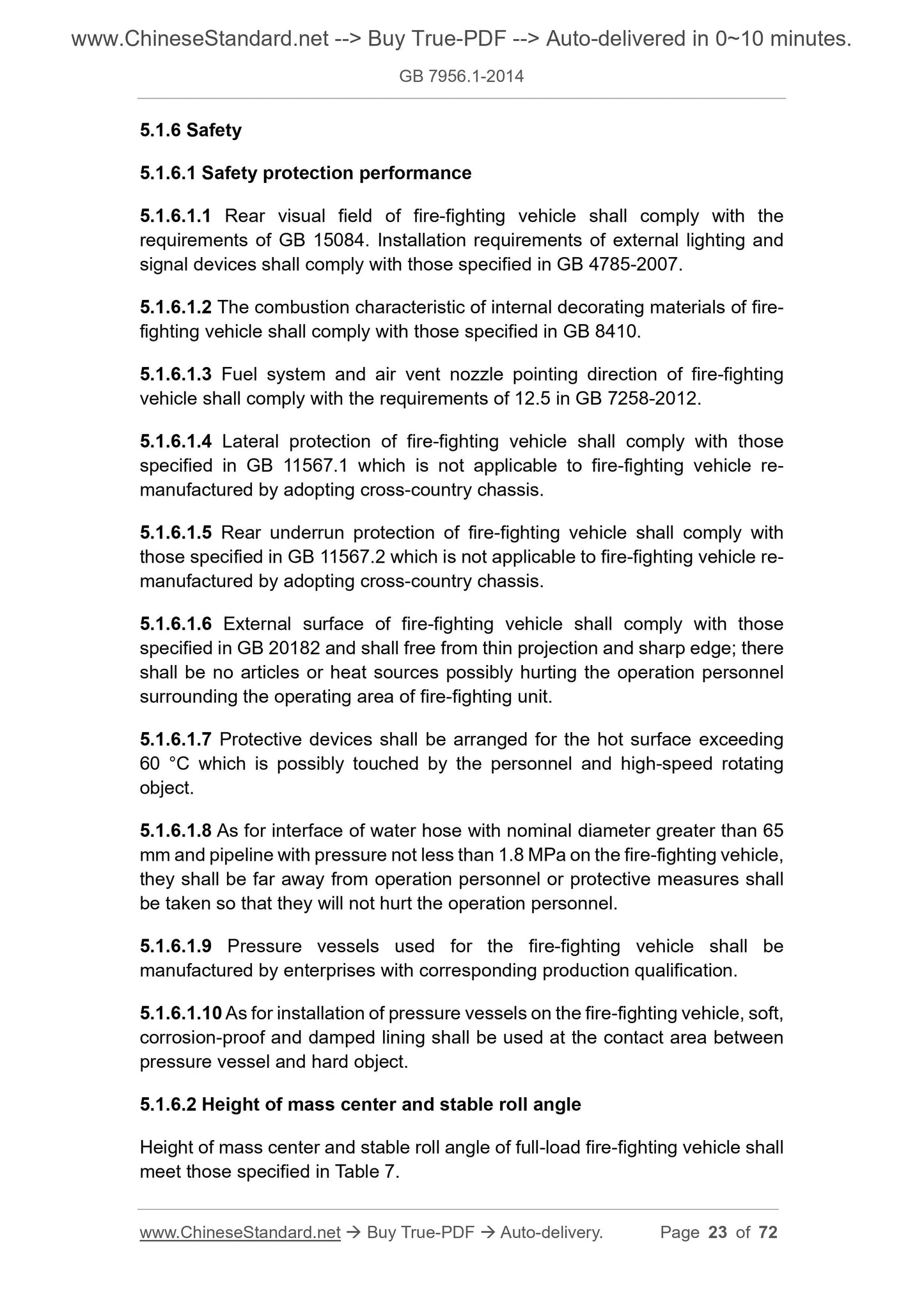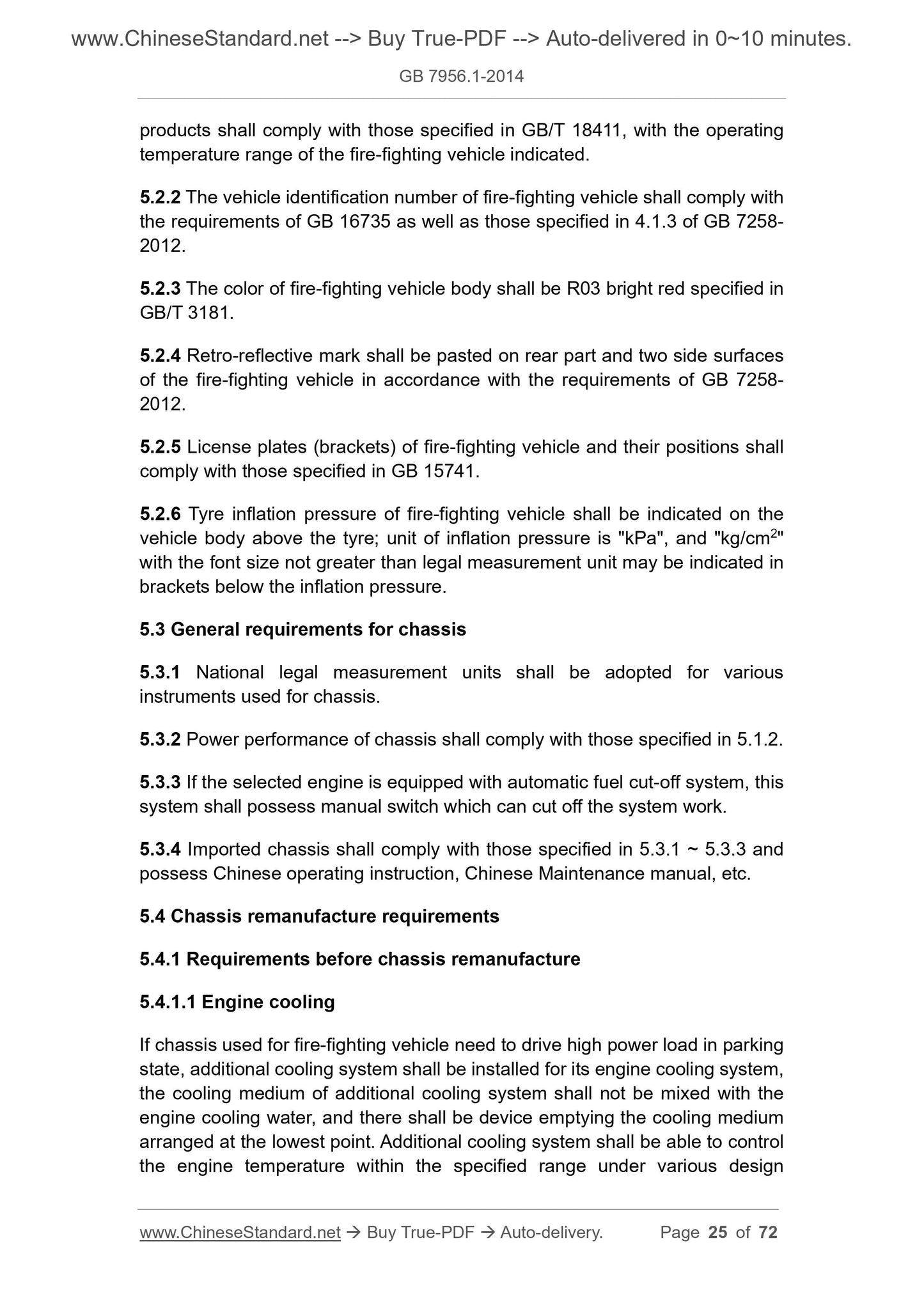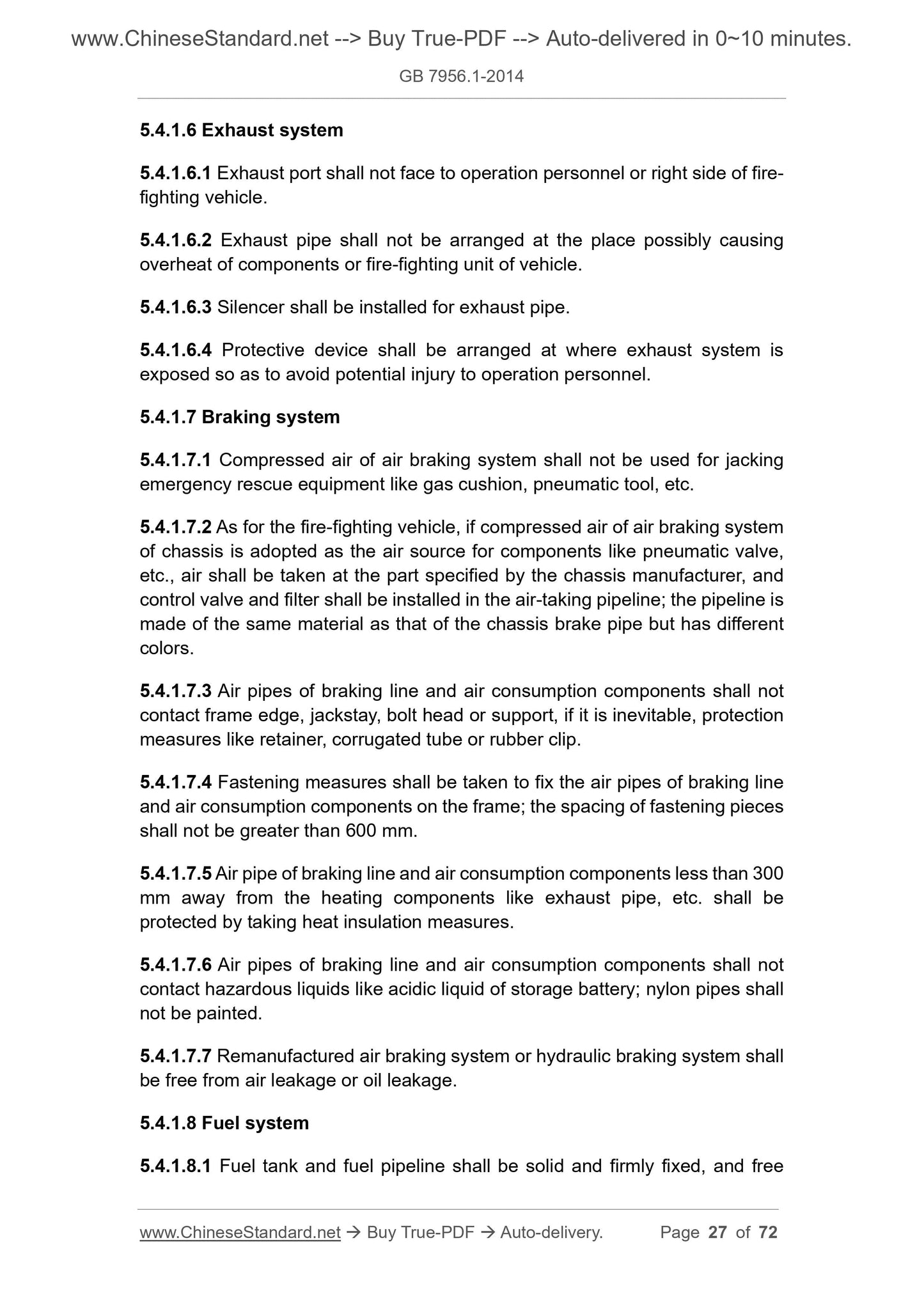1
/
of
12
www.ChineseStandard.us -- Field Test Asia Pte. Ltd.
GB 7956.1-2014 English PDF
GB 7956.1-2014 English PDF
Regular price
$175.00
Regular price
Sale price
$175.00
Unit price
/
per
Shipping calculated at checkout.
Couldn't load pickup availability
GB 7956.1-2014: Fire fighting vehicles - Part 1: General technical specifications
Delivery: 9 seconds. Download (and Email) true-PDF + Invoice.Get Quotation: Click GB 7956.1-2014 (Self-service in 1-minute)
Newer / historical versions: GB 7956.1-2014
Preview True-PDF
Scope
This Part of GB 7956 specifies terms and definitions, classification and model,general technical requirements and test methods of fire-fighting vehicles.
This Part is applicable to various fire-fighting vehicles.
Basic Data
| Standard ID | GB 7956.1-2014 (GB7956.1-2014) |
| Description (Translated English) | Fire fighting vehicles - Part 1: General technical specifications |
| Sector / Industry | National Standard |
| Classification of Chinese Standard | C84 |
| Classification of International Standard | 13.220.10 |
| Word Count Estimation | 40,425 |
| Date of Issue | 9/3/2014 |
| Date of Implementation | 7/1/2015 |
| Older Standard (superseded by this standard) | GB 7956-1998; GB/T 6244-1986; GB 16279-1996 |
| Quoted Standard | GB 1589-2004; GB/T 3181; GB 4785-2007; GB 6245; GB 7258-2012; GB 8108; GB/T 8170; GB 8410; GB 9656; GB 11567.1; GB 11567.2; GB/T 12534; GB/T 12538; GB/T 12539; GB/T 12543; GB/T 12673; GB/T 12674; GB 12676-1999; GB 13057; GB 13954; GB/T 14172; GB 15084; GB |
| Regulation (derived from) | People's Republic of China Announcement of Newly Approved National Standards 2014 No. 22 |
| Issuing agency(ies) | General Administration of Quality Supervision, Inspection and Quarantine of the People's Republic of China, Standardization Administration of the People's Republic of China |
| Summary | This Standard specifies the terms and definitions fire engines, classification and models, common technical requirements and test methods. This section applies to all types of fire. |
Share


